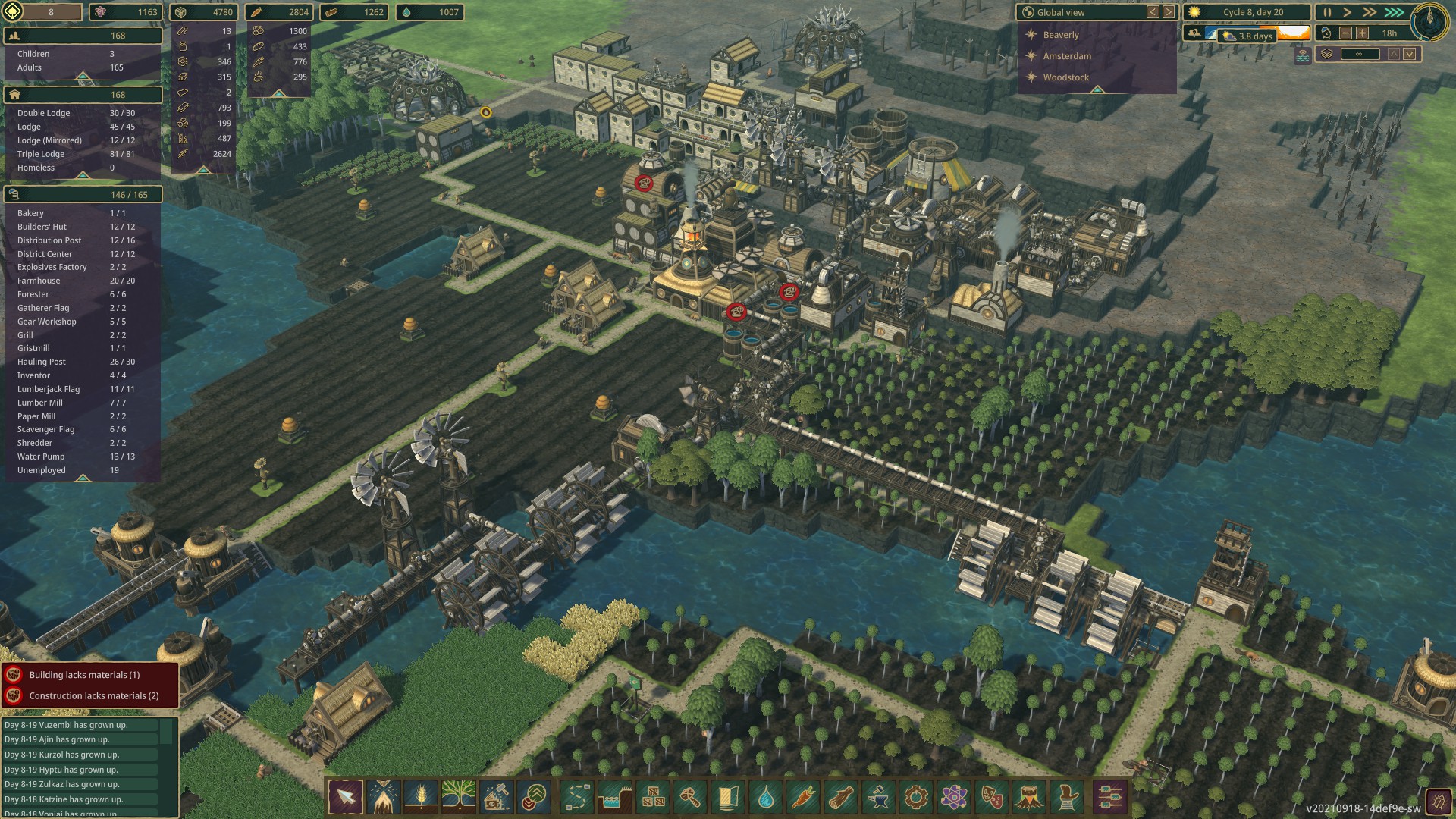
Then it would just be fairly simple math.

It will probably take science to get properly right the first time, knowing exactly how many days the average beaver lives, and how long a breeding pod takes to produce a kit. So it's much much less organic and newb friendly.

With Breeding Pods you have much more direct control over reproduction, but you'll have to figure out how many you need most people will probably have some real peaks and valleys in their population at first. To me it seems pretty simple and micro-management-free to have the system be that simple: Build houses when you need more beavers and they will increase the population to that number of residents. As this is a beta, there is no other set objective than survival, so now you are all set to test out the capabilities it offers, and I hope you will have as much fun as I have had discovering this beautiful uncut gem. Eventually you will come across buildings than need power, and some that offer well being to your beavers. Paths need to connect all the entrances and can be placed on top of platforms.Īs most of the construction options are locked at the beginning of a new game, you will need to accumulate science points - produced by an inventor's lab - to unlock these. Try and concentrate the housing/living areas near food and water supplies, and use the cliffs and steps of the elevation of the map to your advantage - as you will need a lot of materials to build steps and platforms.
#Timberborn guide free
I don't think fertility is affected by the well being overall number (shown at the top right) but the population can rapidly increase if there is plenty of free housing. "How do I get more beavers?" Build houses, campfires and rooftop terraces so your beavers have somewhere to live and can socialize. And remember: carrots are nice, roasted potatoes are tasty, but bread is delicious. Since you can't extend your housing too far, the best is to build vertically. Try and build on dry land and maximize your farming and foresting areas. Irrigated land tiles (the green ones) are the most valuable asset of the map. Having irrigation towers will give you continued irrigation but in exchange of a great volume of water. Retaining a maximum of water in the river during dry season will carry on the supply of water, and will allow you to continue farming to some extent. The flow of water is dynamic, so you can build levees and dams to control the flow of the river. Pumps need to be close to the water tanks, which have to be in the center of your colony. You will also need to accumulate as much wood as possible. As you will need to store increasing quantities to survive the draughts, the construction of many water tanks and warehouses is a very important objective. Since it is also a city builder, your goal is to manage resources and control the expansion of your beaver metropolis.įood and water are - by far - the most important assets you will need to forage and store. You control beavers living next to a river which dries out every season, for a duration that extends over time. Here are a few hints to help you out on the earlier stages of the game and grow a thriving colony. Check out some of our other Timberborn guides for more help.Hello fellow kits, and welcome to Timberborn! Although this game is in early beta, the simple mechanics it uses hides many layers. This is an essential must-know to ensure that your colonies can thrive through droughts, and is one of the first things you should master, but there is so much more to learn in this city-builder. That should be everything you need to know about the basics of dam building in Timberborn.

They’re also cheaper, costing 12 logs, meaning they make a good substitute for dams if you’re in a mad rush and need a reservoir. They can also be stacked on top of one another, allowing you to control the depths of your artificial water bodies. These are similar to dams, but will completely stop all water flow.

You can simply incorporate a floodgate into your dam and handle these problems smoothly.Ĭontrary to this, if you want to flood (perhaps you’re making an artificial lake), then you can use levees. These act to completely block water flow up to an adjustable height, but can be opened to release water at any time, allowing you to quickly solve any flooding issues. Floodgates require planks and logs to build, with the amount depending on the height of the floodgate.


 0 kommentar(er)
0 kommentar(er)
